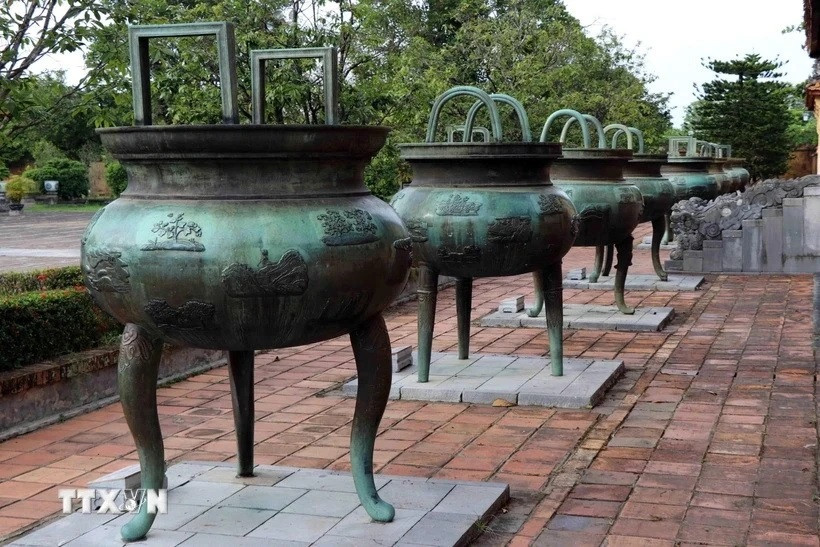
This prestigious recognition was awarded unanimously by all 23 participating countries during the 10th plenary meeting of the Memory of the World Committee for Asia and the Pacific, held in both online and in-person format in Mongolia on May 8.
These bronze urns, all meticulously crafted, stand horizontally within The To Mieu (To Mieu Temple) courtyard in the Hue Imperial Citadel, a place to worship the kings of the Nguyen Dynasty – the last feudal regime which ruled Vietnam from 1802 to 1945.
Representing the country’s unity and beauty as well as enduring legacy of the Nguyen Dynasty, they were cast in late 1835 and completed in early 1837, under the reign of King Minh Mang.
The tallest urn is 2.5m high versus the shortest at 2.3m high. Each one, weighing up to 2,600 kg, has a name symbolising an emperor of the Nguyen Dynasty. The central one is dedicated to King Gia Long.
Beyond their sheer size, the urns are remarkable for their exquisite craftsmanship. The intricate designs on their surfaces reinforce the symbolism of power, stability and dynastic continuity.
They transcend their symbolic function, serving as a unique "geographic encyclopedia" of 19th-century Vietnam. Their surfaces are adorned with 162 exquisite engravings depicting the nation's diverse landscapes, from majestic mountains and flowing rivers to bustling daily activities. Additionally, 90 images of native flora and fauna contribute to a remarkable display of artistry and historical documentation.
Remarkably, all nine urns remain in their original positions within the temple, meticulously preserved and a testament to Vietnam's rich cultural heritage. They were recognised as national treasures in 2012.
With this addition, the country now boasts 10 heritage sites inscribed on the UNESCO Memory of the World Register in the Asia-Pacific region, including 3 documentary world and 7 documentary heritages./. VNA